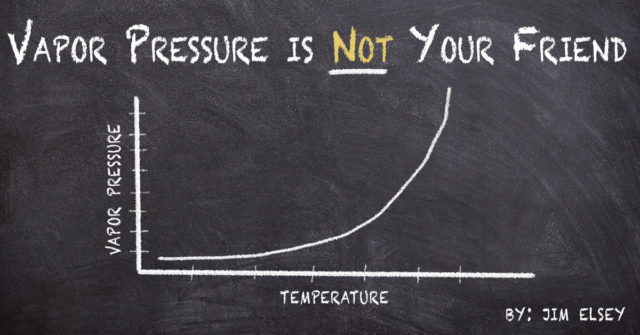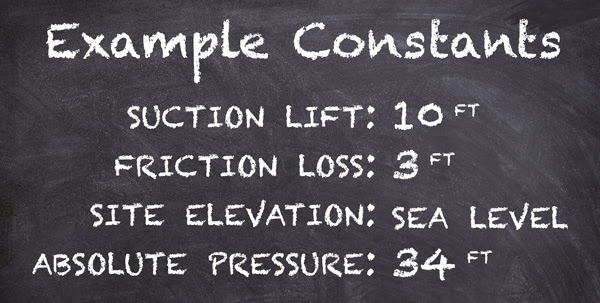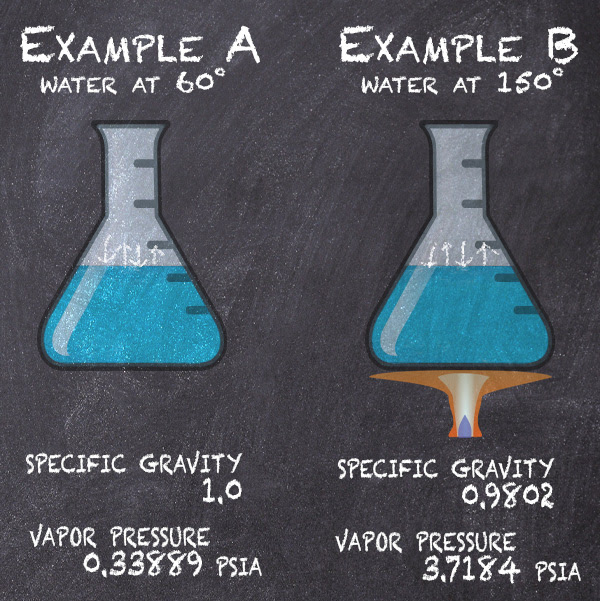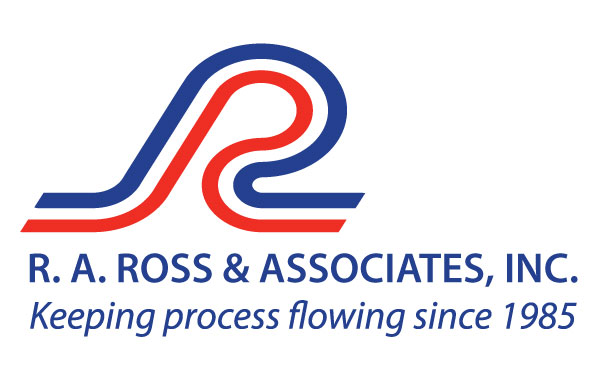
Be very careful on self-primer lift applications because the liquid temperature
directly affects its vapor pressure and that…
…changes the Net Positive Suction Head Available (NPSHA).
![]() Example: Self-Primer – two temperatures… two outcomes:
Example: Self-Primer – two temperatures… two outcomes:
For the example we will use two versions of the otherwise same application. The applications are identical in both versions except the temperature of the fluid is higher in the second version. The higher temperature signifies the vapor pressure has increased.

*Note: 14.7 PSI absolute atmospheric pressure x 2.31 divided by the Specific Gravity of 1 = 33.96 feet ≈ 34).
Any increase in elevation will reduce your absolute pressure (head) and consequently the NPSHA.
In Example B the fluid is water at 150ºF.

You can find these vapor pressure and specific gravity values in several places;
I use the Cameron Hydraulic Data Book or Cranes Technical Publication 410
(There are also several reputable web based sources).
Once you have the conversions then fill in the values for the formula and do the simple math steps (0.33889 X 2.31 = 0.783 ft. and 0.783 divided by 1 is 0.783). Then fill in the values in the NPSHA formula and complete the steps for the answer. Repeat these steps using the different values for Example B.

Note: The difference between the two versions for the value of NPSHA = 7.98 feet which is approximately 8 feet.
-Jim Elsey
